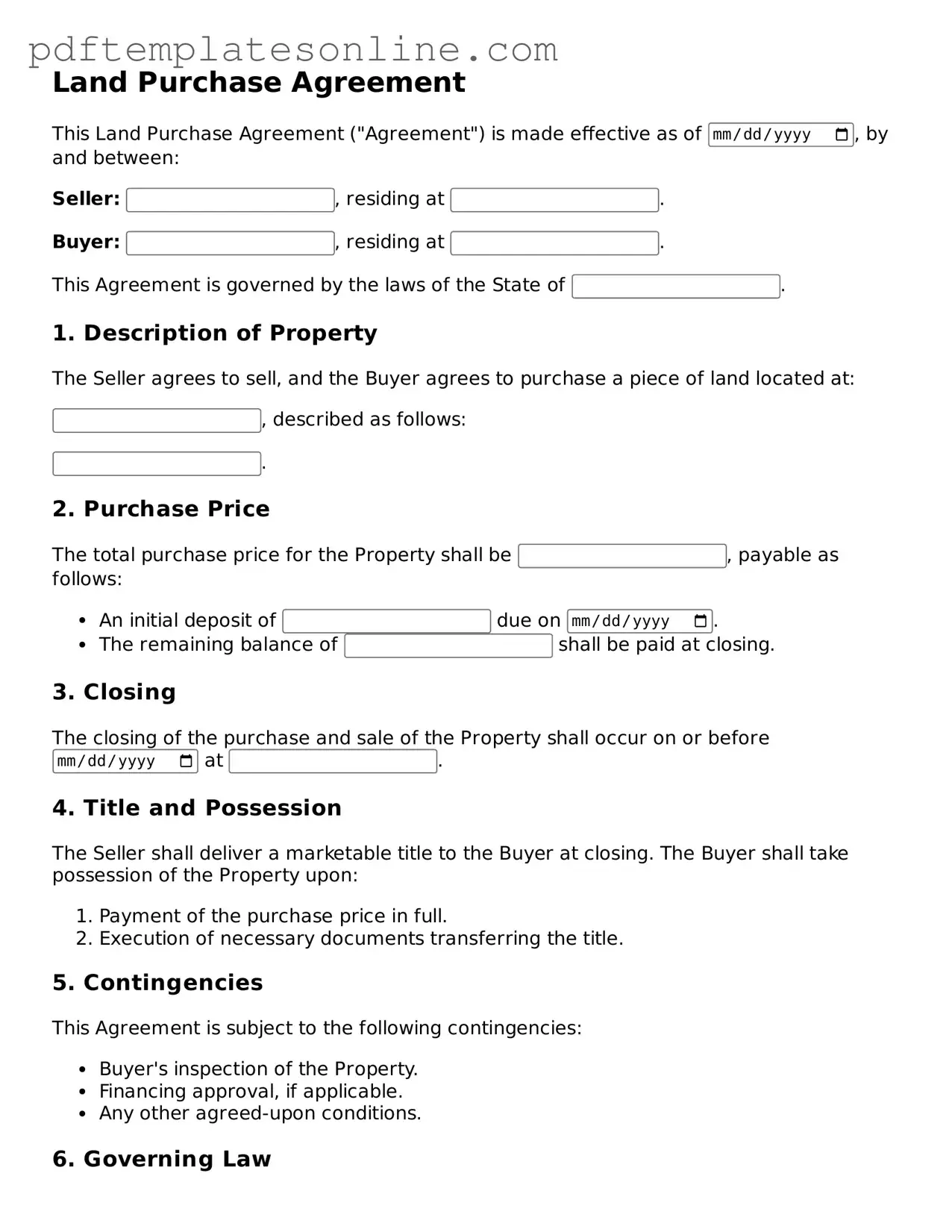Fillable Land Purchase Agreement Document
A Land Purchase Agreement is a legal document that outlines the terms and conditions under which a buyer agrees to purchase a piece of land from a seller. This agreement serves to protect the interests of both parties by clearly defining the rights and obligations involved in the transaction. Understanding this form is essential for anyone looking to navigate the complexities of real estate purchases.
Access Land Purchase Agreement Editor Now
